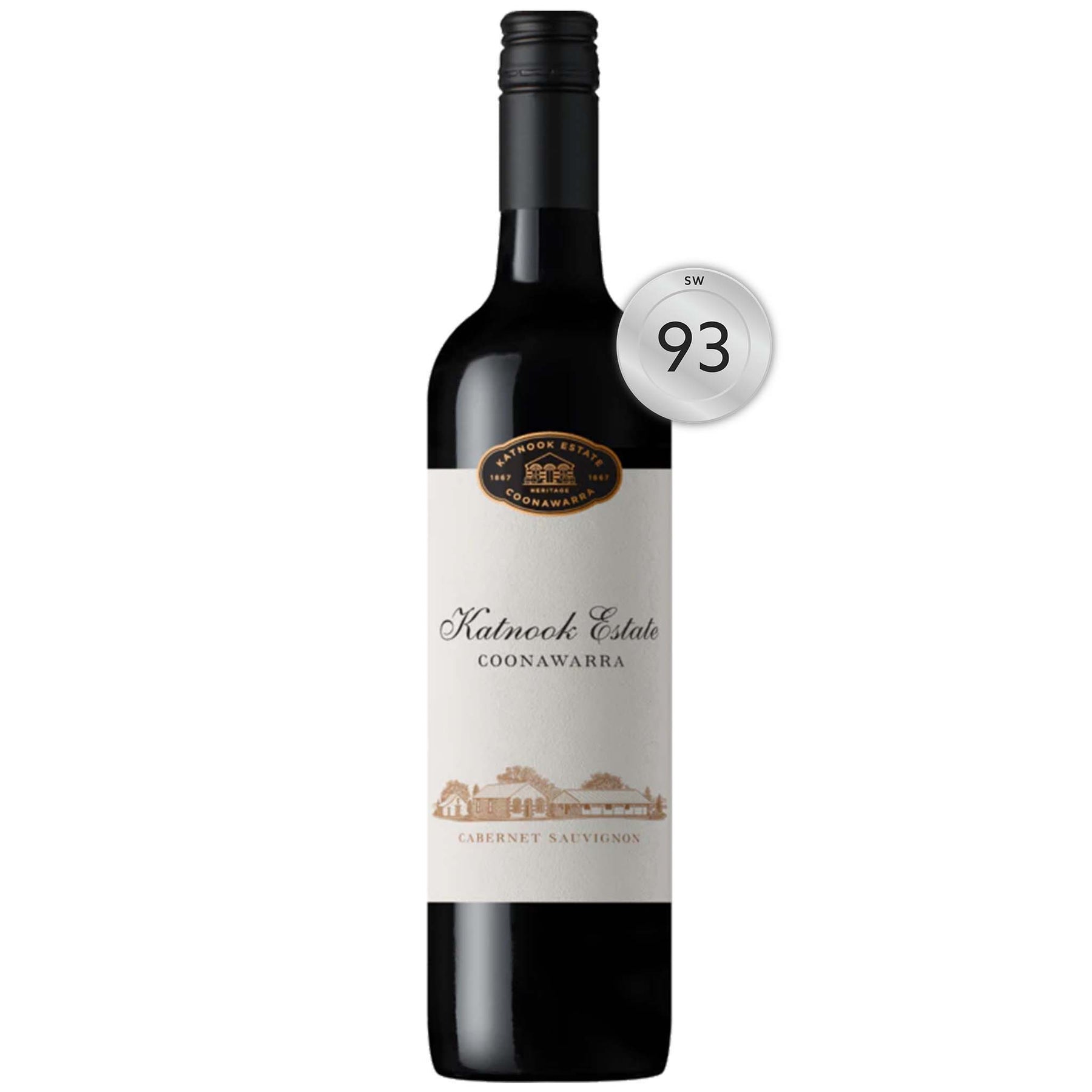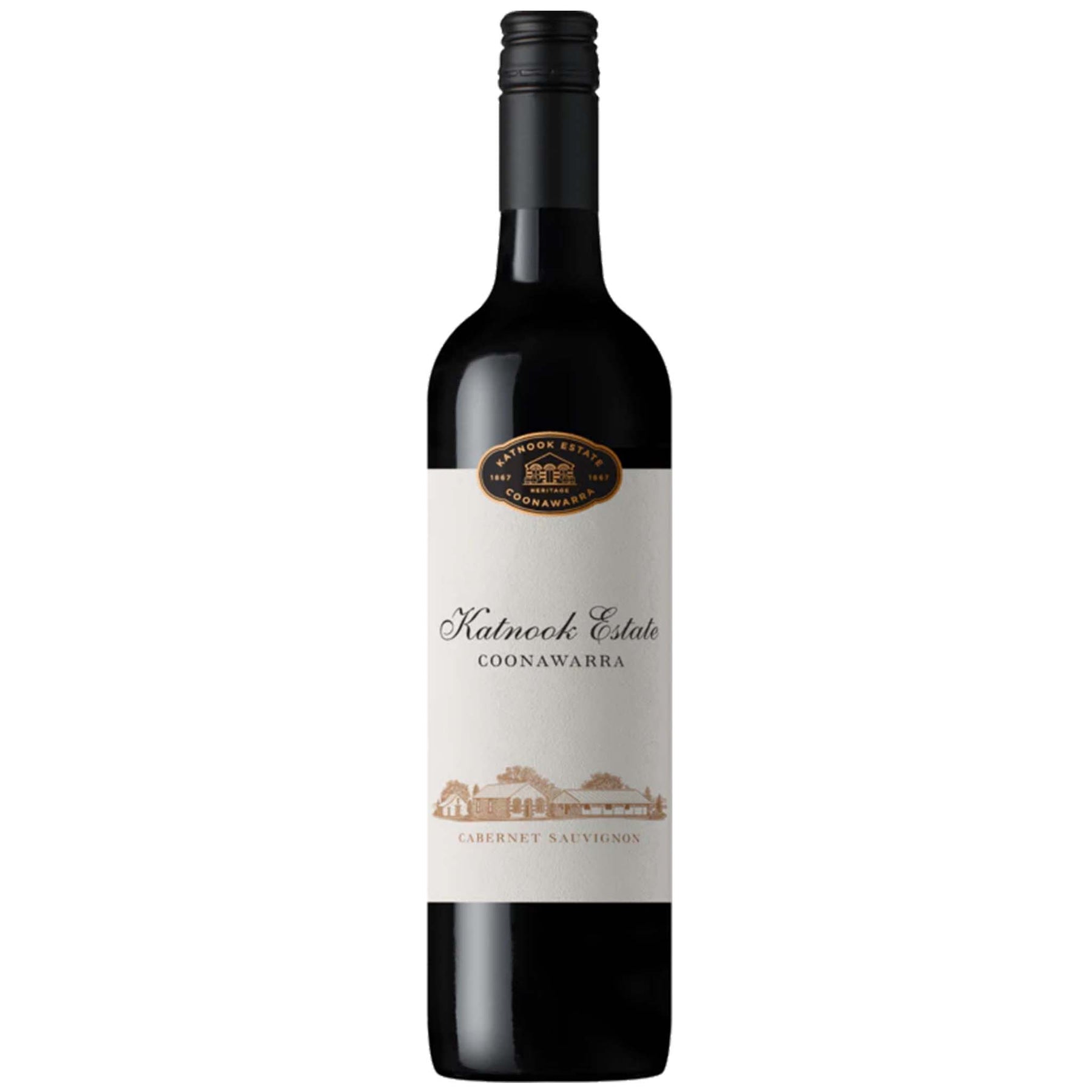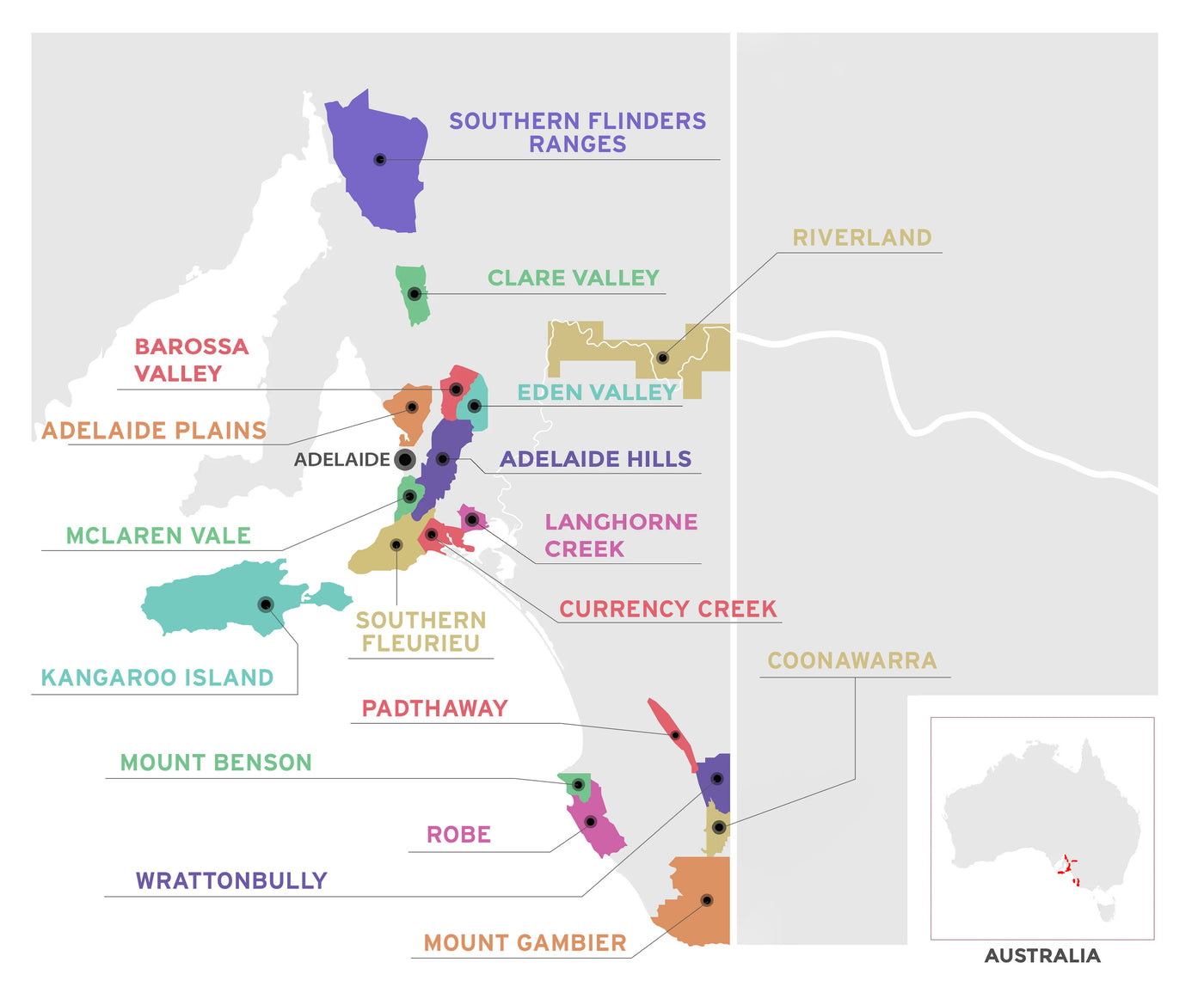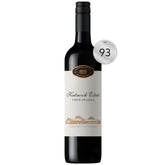

Katnook Estate Coonawarra Cabernet Sauvignon 2022
Style: Red Wine
Variety: Cabernet Sauvignon
Closure: Screwcap
Katnook Estate Coonawarra Cabernet Sauvignon 2022
Warehouse
34 Redland Drive
Vermont VIC 3133
Australia
Critic Score: 93
Alcohol: 14.5%
Size: 750 ml
Drink by: 2034
Katnook Estate is the oldest winery and second-largest wine producer in the Coonawarra wine region of South Australia. Its heritage stretches back to 1896 when John Riddoch produced the first commercial vintage in the woolshed at Katnook. Cabernet Sauvignon is the king in Coonawarra and the main variety grown at Katnook. The Katnook Estate Cabernet is a true reflection of Coonawarra’s terroir and tradition. It strikes a balance between elegance and power with balanced intensity and concentration; approachable in its youth, but with the potential to evolve beautifully over time.
"Christmas cake, hawthorn and blackberries. Red cherries and dried bouquet garni. A brush of leather varnish and maple leaf. Cassia bark and sandalwood. Astute acidity themes the wine with dusty tannins that spread the flavours long and wide. It hits all the touchpoints for a well-ripened cabernet sauvignon with little zaps of electric acidity to keep you guessing. The wine ends with red cherry skin on the finish." Shanteh Wale
Expert reviews
"Christmas cake, hawthorn and blackberries. Red cherries and dried bouquet garni. A brush of leather varnish and maple leaf. Cassia bark and sandalwood. Astute acidity themes the wine with dusty tannins that spread the flavours long and wide. It hits all the touchpoints for a well-ripened cabernet sauvignon with little zaps of electric acidity to keep you guessing. The wine ends with red cherry skin on the finish. Drink 2024-2032." Shanteh Wale, Halliday Wine Companion – 93 points
Wayne Stehbens

Wayne Stehbens: 39 years of winemaking at Katnook Estate, 1979-2017
In 1979, Wayne Stehbens was appointed winemaker and he made his first vintage in 1980 in the Katnook woolshed – just as Riddoch had done 84 years earlier. The first vintage received 49 awards, fuelling the growth and fame of the winery. When Wayne passed away in 2017, he was one of the longest-serving winemakers in Australia’s history, having been chief winemaker for all of Katnook’s 39 vintages. He was also one of the most decorated, having won a swag of awards at home and abroad, including the coveted Jimmy Watson Trophy in 1987 and 1998.
In 2013, winemaker Wayne Stehbens completed his 35th vintage at Katnook Estate. In the interview below, he was asked about his time at Katnook Estate and reflected on the special and more challenging times…
Wayne, you were Katnook Estate’s first winemaker – how did that come about?
I was in the middle of the 1979 vintage at Denman Estate in the Upper Hunter, working with Oenotech when I received a call from my father, Ray, who was working as General Manager for the Katnook Vineyards in Coonawarra. Dad had planted vines in 1968 and over the years the grapes had been sold under various contracts. An oversupply in the late 1970’s provided an opportunity for the company to commence wine production.
They needed a hand installing production facilities at the historic Katnook Woolshed as their part time winemaker Ken Ward (Ex Wynn’s) had injured himself. We got all the equipment in place and the crusher revved up to start harvest in 1979.
In 1978, I worked two vintages, one at Leeton in NSW and the other in Coonawarra. So by the end of 1979, I had worked 4 vintages in 2 years with intensions of going back to Uni to finish my degree in Winemaking. Ken was still contract and doing part time but I’d pretty much taken over and was appointed winemaker later in 1979.
Take us through your decades at Katnook…
The first vintage 1979 was exciting in that it was warm, relatively dry and we predominantly crushed white grapes because then owner Peter Yunghanns recognised that while Coonawarra was great for red, people were moving towards whites. You could say he anticipated the market and in 1972-3 planted Riesling. Then in 1977 he planted Chardonnay and Sauvignon Blanc and more Riesling. At one stage he was one of the biggest Chardonnay growers in Australia as he had that foresight of where the market was heading. It was pretty exciting to be able to work with a range of varieties from the one region. The first crop in 1980 of Sauvignon Blanc meant we were one of the first to do a 100% Sauvignon Blanc in Australia.
The 1980s was the decade of exploring fruit flavours and getting to know vineyard sites in Coonawarra. We really were making wines as fruity as possible back then – picking them late and ripe. Gold medals were going to overripe, over oaked white wines, but towards the late 80s, lean, herbaceous Cabernet Sauvignons became the norm.
By the 1990s, winemaking became more sophisticated, using less oak in whites and more in reds. The wines were becoming better balanced. On top of that, Australia was more highly recognised for reds internationally. The international market had opened up so well for Australia, so we were looking at distributors in the UK and other markets, which added to the excitement of that time.
The 2000s were marked with the launch of our entry point Katnook Founder’s Block range of wines and overall there was with more investment in our brand, with Freixenet completing their purchase in 2008. Our challenges now are just as exciting as they were back in the 1980s. Today we continue to see solid investment in the vineyards and in our heritage through restoring the old Katnook buildings – these are the new developments that keep me committed to this winemaking journey.
What would you say was your most memorable winemaking moment?
I will never forget walking into the old Katnook Woolshed in 1980 with the white and red ferments in full swing. Amongst the largely Riesling ferments, one particular aroma really stood out. It was one small vessel of our first crop Sauvignon Blanc and was such a revelation as it was so distinctive, strong and powerful. This wine became one of Australia’s first straight Sauvignon Blancs – the 1980 Katnook Estate Sauvignon Blanc and I still remember the amazing aromas of those fermenting grapes. It was a sensory first for me – it was then that I knew I’d made the right decision to become a winemaker.
From an awards view point, it was a great thrill to win the Jimmy Watson trophy in both 1987 and 1998. International trophies like Best Australian Red and the Frescobaldi Trophy for Best Vintage Red Wine (at the 2003 UK International Wine & Spirit Competition for the 1998 Odyssey) and more recently, trophies for Odyssey 2008 in Hong Kong International Wine Competition 2011 and Odyssey 2009 International Wine Challenge 2013 are particularly satisfying.
The inevitable question – which was your favourite vintage?
That would have to be 1980 – not only was it my first vintage as winemaker, it was also a great vintage climatically. We were awarded our first gold medals and trophy for the 1980 vintage Riesling – and we are still drinking some 1980s which have aged beautifully. It was in 1980 that I become aware of the unique flavours of Coonawarra.
And your most challenging vintage?
From the highs of the previous three vintages, I came down to earth with a thud with the 1983 vintage. It was a super reality check - wet, miserable, very similar to 2011. It was also the year of the devastating bushfires which came within 10km of Coonawarra. Best forgotten.
Which career would you have pursued if you weren’t a winemaker?
Before wine, I had tried a variety of different jobs and had settled on the building industry as a potential career. I liked the idea of building structures that would be around for a long time.
Winemakers host a lot of promotions around the world and you certainly clock up some miles in this regards. Which was your favourite promotion?
In 2007, Katnook Estate looked at a wide range of world class Merlots at an event called "Merlot Mastery." It was fantastic, not just for Katnook but for the variety. I co-hosted the tasting with Matthew Jukes, James Halliday and Jacques Lurton and we had some great Australian winemakers in attendance too, such as Jim Irvine. We’ve always made a full bodied Merlot style and to see it in this context was very satisfying.
When was your greatest challenge as a winemaker in your 35 years at the helm?
The greatest challenge is probably now with the exchange rate. As a mature winemaking country, the exchange rate is against us and this comes at a time that consumers are looking for something new. So when it comes to investment there are a lot of questions and not a lot of answers. We are trying to second guess the consumers, as well as the exchange rates- these are major challenges. Another of course is the best route to market. How do we get to our consumers and maintain profitability?
What is it about Coonawarra that keeps you there?
Coonawarra is now very much my home as a second generation grapegrower here. Once our children started school (Wayne’s wife Michelle manages Katnook’s Cellar Door), we decided this was a great area to raise a family. Coincidentally, we were producing many varieties and had won a few prestigious international wine trophies. Katnook was emerging as a key player in the 1980s, especially with Sauvignon Blanc. The whole package was coming together. Then we started to export – so my work and family threw me some exciting times. There are still challenges today and my heart is still firmly in Coonawarra.
This year you also celebrate 30 years of Katnook Estate Cabernet Sauvignon. What is it about Coonawarra that is so conducive to great Cabernet?
No surprises here – without question, it is the combination of the famous terra rossa soil and Coonawarra’s cool climate which hand up great Cabernet fruit in the vineyard. The relatively shallow terra rossa over limestone contains vigour, which enhances physiological ripeness, giving us great typicity and regionality. The climate plays its part in giving us nice, dry sunny days and cool nights from veraison to maturity. We are very lucky here.
What is your outlook for Coonawarra wine region?
Coonawarra will always maintain a key place for premium wines in Australia. We have to meet the same challenges that all of Australia faces and notwithstanding the competition from other countries, it is about dealing with the high exchange rate and Mother Nature. We are seeing greater weather extremes now that I haven’t personally seen in my lifetime.
If you were able to make wine anywhere else in the world other than Coonawarra, where would it be?
My ideal place is not a specific country but rather in my imagination. The site would have Terra Rosa soils over limestone or ancient gravels. Our house would overlook a small vineyard, with gentle undulations down to a pristine beach. The small winery would overlook a river, which is a natural border on the property. Of course the climate would be similar to Coonawarra, but definitely warmer in winter!
You have a passion for certain cars, tell us about that?
As long as it goes fast, I have a passion for it. When I started with Katnook, I discovered an Australian sports car called a Bolwell Mark 8 Nagari. What I loved about that was it had a V8 engine and was one of the fastest production cars in the world at the time they were released. Even faster than a Ford GTHO. The Bolwell was quite before their time in terms of fibreglass bodies and chassis.
So I bought one in 1979 and restored an original which I still have and enjoy driving. I’m a member of the Bolwell Club of SA and members often come to Katnook to catch up. I bought another Bolwell body and chassis (which needs restoring) in 2006 so I must get around to building that. I would love to spend more time on that.
My other passion is water skiing. When the lakes have water we ski locally or go up to the mighty Murray near Talem Bend. I also love tennis and used to play competitively by but now it’s a social hit now and then. Life is pretty good!
About the winery

Katnook Estate is the oldest winery and second-largest wine producer in the Coonawarra wine region of South Australia, home to the fabled rich, red Terra Rossa soil. Its history stretches back to 1861 when Scottish immigrant John Riddoch arrived at Penola and purchased land and planted fruit trees. He was so impressed with the remarkable rate of growth of the fruit trees that he purchased 464 hectares of land that had the same red soil. In 1890 Riddoch established the Penola Fruit Colony in 1990, subdividing the land into 4 hectare blocks and selling them at $50 per hectare. In essence, Coonawarra was born.
One of the plots he purchased was named 'Katnook', the indigenous word for 'fat land', referring to the fertile character of the soil. Riddoch planted vines and commissioned the building of his 'woolshed', which still stands today. He trialled the first vintage in 1895, followed by the first commercial batch in 1896 which was made in the woolshed. By all accounts this second vintage indicated the outstanding quality that was to come. Riddoch died suddenly in 1901 and the property was farmed for an extended period of time and the woolshed used as a sheep station.
Katnook’s contemporary history begins in 1971 with extensive planting of new vines. For the rest of the decade Ray Stehbens, the General Manager of Katnook at the time, concentrated on re-establishing the vineyards and improving viticultural management. In 1979, his son Wayne was appointed winemaker and he made his first vintage in 1980 in the Katnook woolshed – just as Riddoch had done 84 years earlier. The first vintage received 49 awards, fuelling the growth and fame of the winery. When Wayne passed away in 2017, he was one of the longest-serving winemakers in Australia’s history, having been chief winemaker for all of Katnook’s 39 vintages. He was also one of the most decorated, having won a swag of awards at home and abroad, including the coveted Jimmy Watson Trophy in 1987 and 1998.
In June 2001, recognising the need for strategic global alliances, 60% of the shareholding was sold to the Spanish wine company Freixenet, the world’s biggest sparkling wine producer. In January 2008, Freixenet purchased the remaining shareholding and subsequently invested $8 million in renovating and improving the vineyards, winemaking facilities and heritage buildings.
Despite the acquisition of Katnook by a corporate giant, the winery was still seen as a family affair; its name inexorably linked to the Stehbens name. Ray Stehbens established the vineyard and together with son Wayne, established the winery and the brand, while Wayne’s wife Michelle managed the Katnook cellar door.
In September 2020, Accolade Wines acquired Katnook from Freixenet. Chief Executive Robert Foye said: "Katnook is renowned for producing rich and balanced red and white varietals that are sought after by the rest of the world and we are delighted to be able to help expand the potential of such an esteemed vineyard and region." He stressed that Accolade would not touch Katnook's strong heritage, which stretched back to 1896.
Three ranges of wine are produced at Katnook Estate: Katnook Founder’s Block, Katnook Estate and, in exceptional vintages, the flagship Odyssey Cabernet Sauvignon and Prodigy Shiraz.
Vineyards
Katnook's 155 hectares of vineyards lie in the heart of Coonawarra. The soil is composed of 20-60cm of terra rosso over a calcrete layer, a hard calcium rich layer which forms a distinctive boundary between the terra rossa and the limestone below. It’s this limestone which holds the freshwater aquifers.
Cabernet Sauvignon is the king in Coonawarra and the main variety grown at Katnook. Other red varietals include Shiraz, Merlot and Pinot Noir, and new plantings of Malbec and Tempranillo. The two dominant white varieties are Chardonnay and Sauvignon Blanc, with some Riesling, Pinot Grigio and Semillon.
Winemaker

Current winemaker Daniel McNicol joined Katnook as an assistant winemaker in 2019, soon after graduating in Winemaking from the University of Adelaide. After two vintages he was promoted to lead winemaker.
Daniel’s journey in wine started at the age of 14, working at vineyards in McLaren Vale where he grew up. He worked in the vineyards, cellar door and winery at Wirra Wirra for eight years whilst at school and university. In 2018 he travelled to Spain and Italy to attend the International Terroir Congress in Zaragoza and explore the beauty of Mt Etna and diversity of its wine growing areas.
The trip created an aspiration for him to work within a region renowned for its sense of place, unique soil formation and microclimate. So, in late 2018, Daniel and his wife moved to Coonawarra, where he started the next step of his journey at Katnook Estate. He thoroughly enjoys working and living in the Coonawarra, noting, "the wines here have purity, ageability and regionality. I am thankful to be a part of a supportive, collaborative, and easy-going community."
"Katnook represents a vital connection between tradition and evolution," says McNicol. Its wines embody a classic, terroir-driven approach, which has been essential in distinguishing Australia’s premium offerings on the global stage. "Katnook showcases the diversity of Australian wine, in a refined cool-climate style that contrasts with the richer, bolder expressions from warmer regions. It plays a crucial role in reminding the world of Australia’s ability to produce world-class, age-worthy wines with depth and sense of place."
McNicol offered his take on Katnook’s Chardonnay, Shiraz and Cabernet at a tasting with Wine Selectors in January 2025. "Chardonnay here is about balance, richness and freshness. They are textured and elegant with vibrant white peach and nectarines, bright lemons and grapefruit, and a gentle creaminess from oak and lees that adds texture without overpowering the wine."
"Coonawarra Shiraz have fine-grained tannins and a polished elegance, utilising oak that enhances without dominating the fruit profile. Katnook’s Shiraz highlights the finesse of Coonawarra, offering a beautiful cool-climate expression with notes of white pepper spice, vibrant blue and black fruit, and a hint of savoury complexity."
"Katnook’s Cabernets are a true reflection of Coonawarra’s terroir and tradition. They strike a balance between elegance and power with balanced intensity and concentration; approachable in their youth, but with the potential to evolve beautifully over time."

South Australia
South Australian is responsible for more than half the production of all Australian wine. It is home to more than 900 wineries across 18 wine regions. The regions are Adelaide Hills, Adelaide Plains, Barossa Valley, Clare Valley, Coonawarra, Currency Creek, Eden Valley, Kangaroo Island, Langhorne Creek, McLaren Vale, Mount Benson, Mount Gambier, Padthaway, Riverland, Robe, Southern Fleurieu, Southern Flinders Ranges and Wrattonbully.
Many of the well-known names in the South Australian wine industry established their first vineyards in the late 1830s and early 1840s. The first vines in McLaren Vale were planted at Reynella in 1839 and Penfold's established Magill Estate on the outskirts of Adelaide in 1844.
South Australia has a vast diversity in geography and climate which allows the State to be able to produce a range of grape varieties - from cool climate Riesling in the Clare and Eden Vallies to the big, full bodied Shiraz wines of the Barossa Valley and McLaren Vale. Two of Australia's best-known wines, Penfolds Grange and Henschke Hill of Grace, are produced here. There is much to discover in South Australia for the wine lover.

